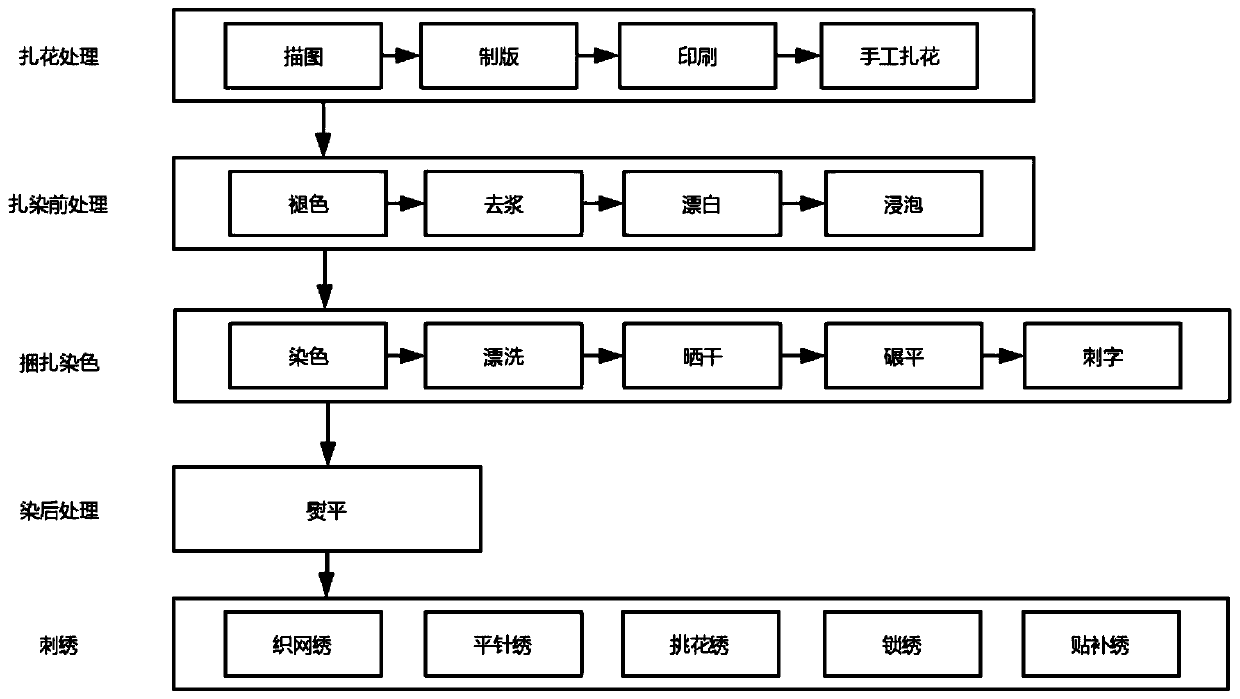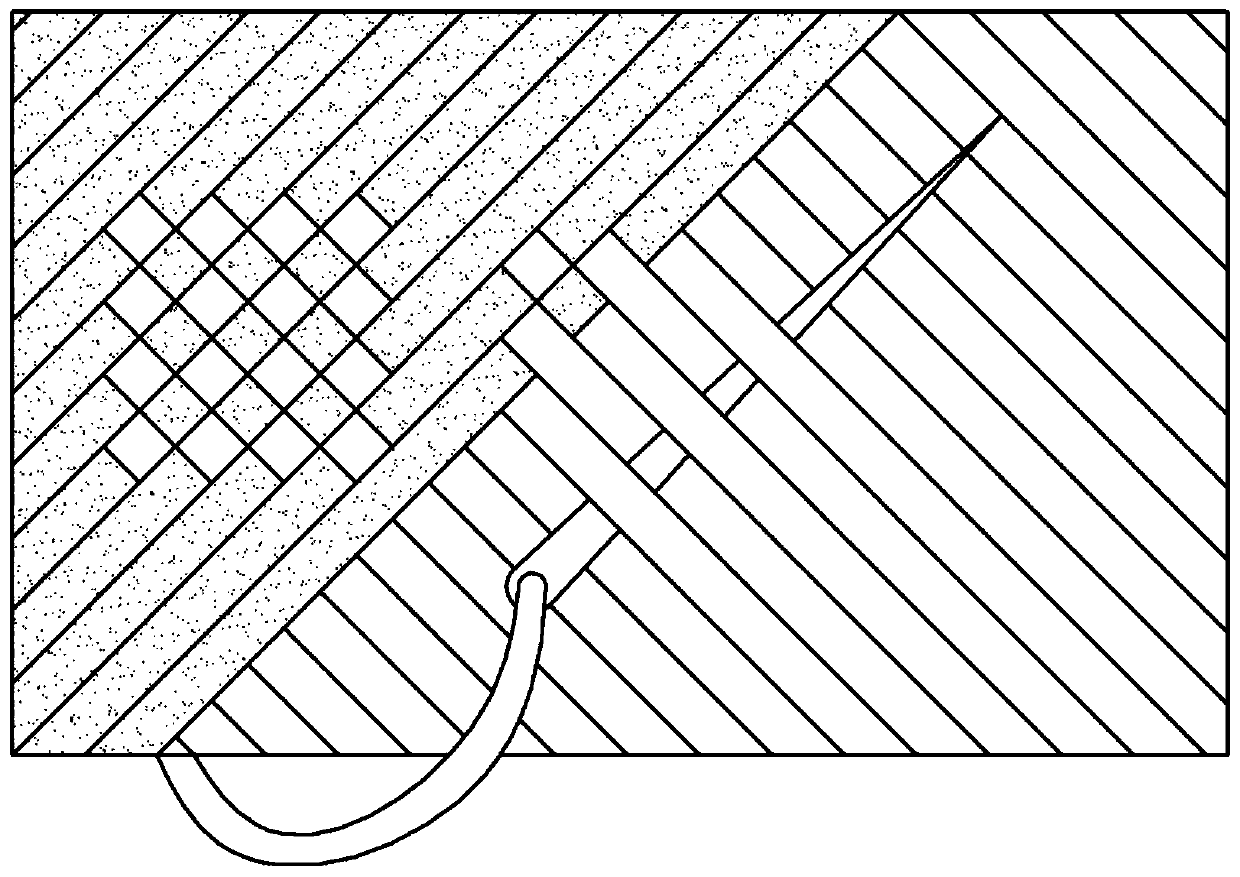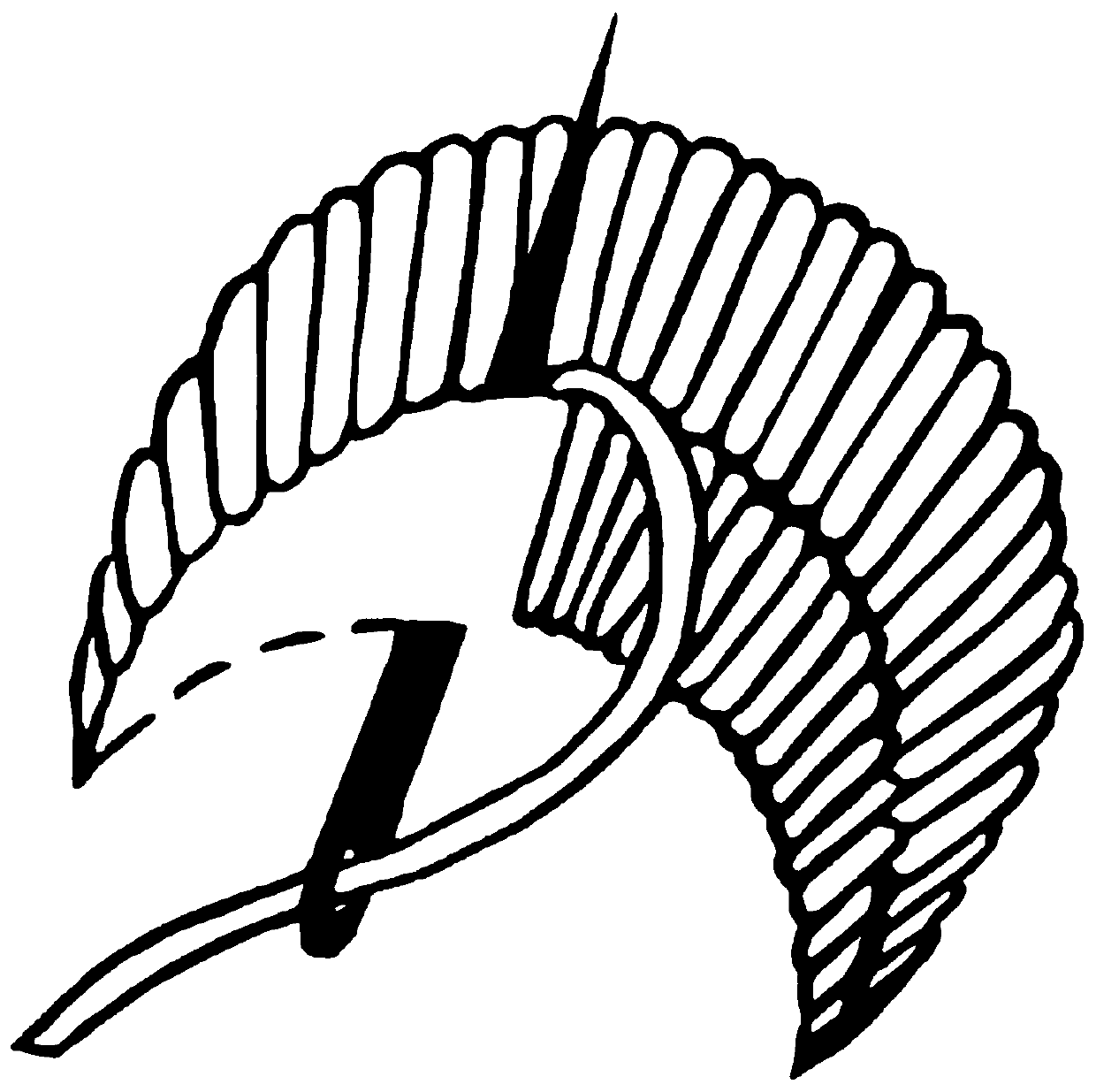Tie-dyeing and embroidering technology
An embroidery and craftsmanship technology, applied in the field of printing and dyeing, can solve problems such as single visual effect and inability to enrich stereoscopic visual experience
- Summary
- Abstract
- Description
- Claims
- Application Information
AI Technical Summary
Problems solved by technology
Method used
Image
Examples
Embodiment
[0026] The present invention comprises steps as follows:
[0027] 1. Tie-up treatment: including drawing, plate-making, printing and hand-knotting, it plays an anti-dyeing effect on the knotted part of the fabric, keeping the knotted part in its original color, while the untied part is evenly dyed.
[0028] 2. Pre-dyeing treatment: In order to ensure uniform dyeing during the tie-dyeing process, the fabric needs to be pre-dyeed. Because the fabric often contains sizing, additives and certain natural impurities. Including fading, desizing, bleaching and soaking to ensure uniform dyeing for tie-dyeing. Said discoloration and desizing are done by adding lye, oxidant or amylase and other medicaments to boil the cloth with water to remove the pulp. After the desizing, it also includes refining, boiling the cloth with caustic soda and water, wherein the caustic soda is 2.5-3.5% of the weight of the cloth, and the water is 28-32 times the weight of the cloth, so as to remove the na...
PUM
 Login to View More
Login to View More Abstract
Description
Claims
Application Information
 Login to View More
Login to View More - R&D
- Intellectual Property
- Life Sciences
- Materials
- Tech Scout
- Unparalleled Data Quality
- Higher Quality Content
- 60% Fewer Hallucinations
Browse by: Latest US Patents, China's latest patents, Technical Efficacy Thesaurus, Application Domain, Technology Topic, Popular Technical Reports.
© 2025 PatSnap. All rights reserved.Legal|Privacy policy|Modern Slavery Act Transparency Statement|Sitemap|About US| Contact US: help@patsnap.com



